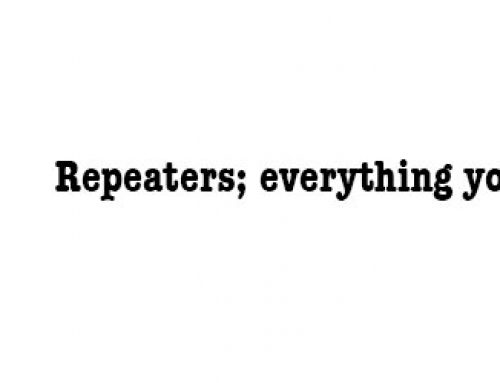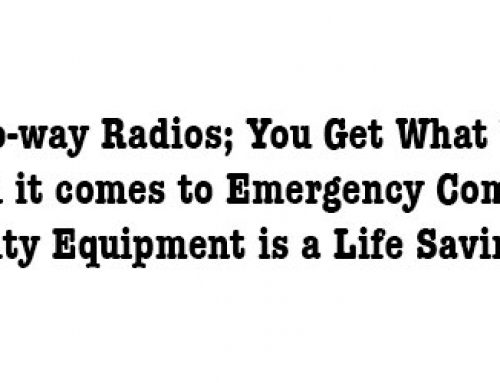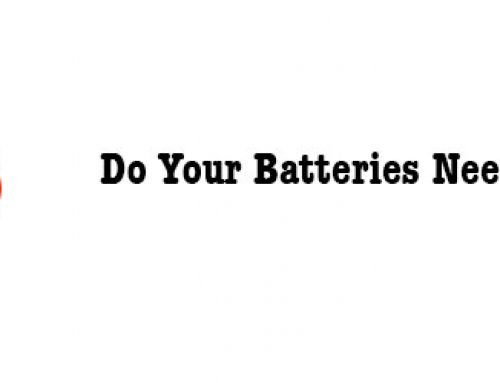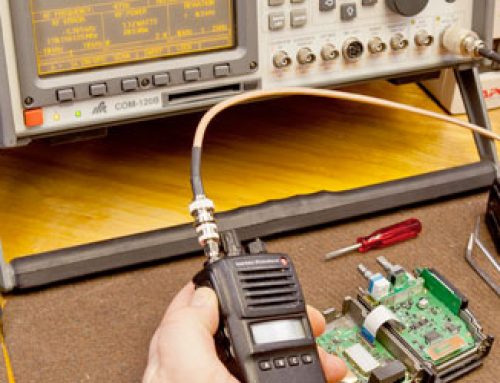There are five distinct advantages a well-planned two-way radio system has over a cell phone in an emergency.
- Instant communication
- Network independence
- All, Group, and Individual Call functionality
- Interoperation Capabilities
- Emergency features built in the device
- Flexibility
Let’s set up some real scenarios for comparing these two devices in real-world situations before we go into more detail on the five advantages.
Emergency Radio Communications When Managing a K-12 school
In the United States, public & private schools K-12 are required by state laws to drill on building lockdowns, fire drills, and student evacuations. They also have active shooter drills, managing students coming into the school in the morning and dismissal in the afternoon. All of these scenarios, speed & clarity of communication is important, especially in an emergency.
Emergency Radio Communications When Managing a Manufacturing Plant or and type of industrial plant operation
In a modern plant workplace, worker safety is a serious issue; some plants are faced with managing volatile materials, operating dangerous equipment or in a hazardous environment, and have many fast-moving parts between man and machine. Most plants run quarterly if not monthly, safety drills on spills, fires, injured workers, security breaches, and evacuations.
Emergency Radio Communications Managing a high rise building or large facility
Today, building managers face a lot of challenges, looking after security concerns inside and outside of the building, managing crews for maintenance and construction, weather events affecting their facilities, and making sure that if something happens, the people inside their facilities can get out safely.
Instant Radio Communication to the Right People in an Emergency Situation
No delays caused by dialing and waiting for someone to answer
The first advantage a two-way radio has over a traditional cellphone is Instant Communication; once the user presses the radio push to talk button, the call is sent over the airwaves and radios tuned to that channel will hear the call. With a cellphone, you need to dial the number. Even if the number is programmed, the person must answer the phone. The average wait time to initiate a cellphone call is 10 to 25 seconds. Other issues include ringers set to silent or bad cell coverage. In emergencies, adrenaline levels are high; people make mistakes like wrong numbers or fumbling with the cellphone to find the right number.
With a properly design two-way radio plan and training, all the user has to do in an emergency is press one button, and instantly, they are calling the right people in your organization for help.
Radio Network independence in an Emergency
With a well-designed two-way radio system, you are not dependent on the cellular networks. You essentially own your network and have complete control of it. In any major disaster, a significant event like an earthquake, school shooting, or weather events the cellular networks go down and grind to a halt because they were never designed to handle that type of traffic that follows these events.
By having your small network, you are insulated from issues cellular networks present. As a result, your emergency calls to your staff will go through. After Super Storm Sandy, a chemical plant customer had no electricity, no landline phones, and 3 feet of water in their plant. This client had two-way radio coverage and was able to secure the chemicals inside their plant and begin the recovery process.
All, Group, and Individual Call functionality in two-way radios
Modern two-way radio systems provide many calling options. Options include; call everyone on the system with an ALL CALL. Clients can great a GROUP CALL and call just the maintenance staff or security personal or the emergency response team at their facility. An INDIVIDUAL CALL can be made to the plant manager or the school principal or head of security. These calling features give the radio user flexible tools to talk to many different departments at the touch of a button.
Emergency Interoperation Capabilities with Police, Fire, and EMTs
Some facilities like chemical plants, schools, and other industrial settings need to be able to communicate with Public Safety Organizations like Police, Fire, and EMS during an emergency event. Two-Way radio systems can give you the ability to interoperate with these agencies by design. If planned for strategically planned ahead of time, interoperation communication provides high levels of flexibility into the system. With a turn of the radio dial, you could be communicating with the Public Safety organizations at the scene. We can even tie in a smartphone & computer devices to talk on your radio system too, in emergencies.
Emergency features built-in two-way radios
Some standard or optional features today’s radio can offer are emergency alert buttons, man down alerts/switches, and lone workers.
The emergency alert button is typically the big orange button you see on today’s higher grade two-way radios. The button is programmed to activate an alert and audible alarm that goes out to a predetermined radio channel alerting staff to emergencies. The audible alarm can be programmed to continue sending this alarm continuously or until the user that activated it turns it off. This feature is excellent if you have a hurt worker in a plant that becomes incapacitated, and you need to find them. Just follow the audible alarm coming from the radio. The alert that is heard by the listening users can also hear an alarm go off on their radio, notifying them of the situation. This feature can also be programmed to have the microphone go live without pressing the push to talk button of the user who activates the alarm for hands-free operation.
We also recommend using custom radio identifiers if using this feature because when the alert is triggered, it can visually display the user who activated the alarm if your radio has an LCD screen.
Man down alerts some two-way radios have this feature built-in or in some instances, you can have an optional board installed into your radio. How this can work is when the two-way radio goes horizontal for a predetermined amount of time, say 120 seconds, the emergency alert on the radio will activate and radio users listening to the channel will hear the alarm. This feature is handy when workers are going into a dangerous situation, working in a hazardous environment, or the health of a worker may be in question.
Lone Worker is another great emergency feature that is standard in many mid to high tier two- way radios. Here is how it can work. The radio user is going into a part of the facility alone; they then press a button on their radio to activate the lone worker feature. If the user that activated the lone worker feature doesn’t press the push to talk button on their radio within a predetermined time range, the emergency alert will enable. This feature can bring peace of mind to a worker in a large facility.
Flexibility means safety
With all the features two-way radios can bring to the table in an emergency, you have great flexibility to design and plan a radio system that will make your people safe and secure in the environment in which they live and work.
The key to effective emergency planning is having a set of written procedures, a clearly defined chain of command, roles, and responsibilities. Clearly articulating these plans will allow your two-way radio dealer to help you achieve your communications goals.
One last parting point of difference regarding two-way radio vs. cellphones, with two-way radios there is no monthly incurring fees you own the system all you need to do is maintain it.
Let us know how we can help your organization be safer and more secure in emergencies.





